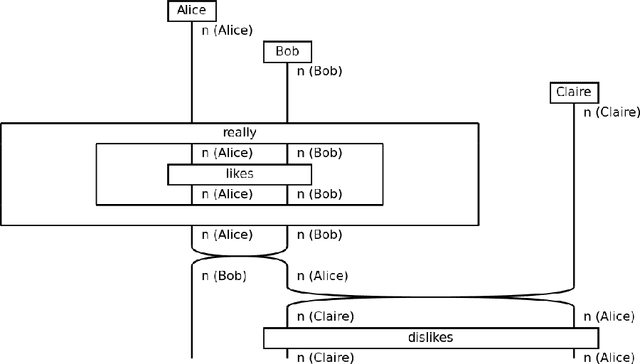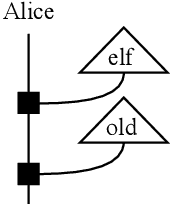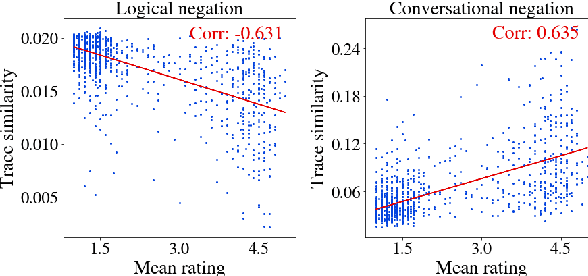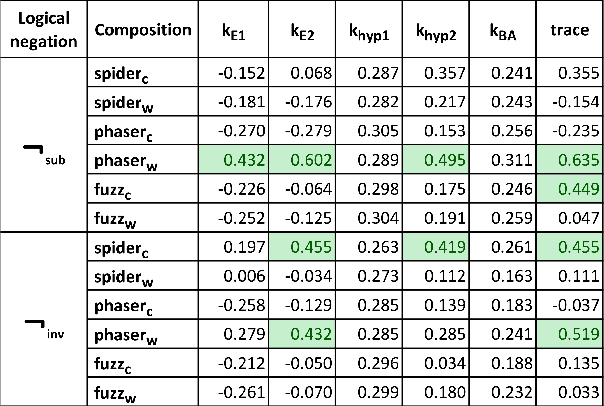Benjamin Rodatz
A Pattern Language for Machine Learning Tasks
Jul 02, 2024



Abstract:Idealised as universal approximators, learners such as neural networks can be viewed as "variable functions" that may become one of a range of concrete functions after training. In the same way that equations constrain the possible values of variables in algebra, we may view objective functions as constraints on the behaviour of learners. We extract the equivalences perfectly optimised objective functions impose, calling them "tasks". For these tasks, we develop a formal graphical language that allows us to: (1) separate the core tasks of a behaviour from its implementation details; (2) reason about and design behaviours model-agnostically; and (3) simply describe and unify approaches in machine learning across domains. As proof-of-concept, we design a novel task that enables converting classifiers into generative models we call "manipulators", which we implement by directly translating task specifications into code. The resulting models exhibit capabilities such as style transfer and interpretable latent-space editing, without the need for custom architectures, adversarial training or random sampling. We formally relate the behaviour of manipulators to GANs, and empirically demonstrate their competitive performance with VAEs. We report on experiments across vision and language domains aiming to characterise manipulators as approximate Bayesian inversions of discriminative classifiers.
A Pipeline For Discourse Circuits From CCG
Nov 29, 2023

Abstract:There is a significant disconnect between linguistic theory and modern NLP practice, which relies heavily on inscrutable black-box architectures. DisCoCirc is a newly proposed model for meaning that aims to bridge this divide, by providing neuro-symbolic models that incorporate linguistic structure. DisCoCirc represents natural language text as a `circuit' that captures the core semantic information of the text. These circuits can then be interpreted as modular machine learning models. Additionally, DisCoCirc fulfils another major aim of providing an NLP model that can be implemented on near-term quantum computers. In this paper we describe a software pipeline that converts English text to its DisCoCirc representation. The pipeline achieves coverage over a large fragment of the English language. It relies on Combinatory Categorial Grammar (CCG) parses of the input text as well as coreference resolution information. This semantic and syntactic information is used in several steps to convert the text into a simply-typed $\lambda$-calculus term, and then into a circuit diagram. This pipeline will enable the application of the DisCoCirc framework to NLP tasks, using both classical and quantum approaches.
Composing Conversational Negation
Jul 14, 2021
Abstract:Negation in natural language does not follow Boolean logic and is therefore inherently difficult to model. In particular, it takes into account the broader understanding of what is being negated. In previous work, we proposed a framework for negation of words that accounts for `worldly context'. In this paper, we extend that proposal now accounting for the compositional structure inherent in language, within the DisCoCirc framework. We compose the negations of single words to capture the negation of sentences. We also describe how to model the negation of words whose meanings evolve in the text.
Conversational Negation using Worldly Context in Compositional Distributional Semantics
May 12, 2021



Abstract:We propose a framework to model an operational conversational negation by applying worldly context (prior knowledge) to logical negation in compositional distributional semantics. Given a word, our framework can create its negation that is similar to how humans perceive negation. The framework corrects logical negation to weight meanings closer in the entailment hierarchy more than meanings further apart. The proposed framework is flexible to accommodate different choices of logical negations, compositions, and worldly context generation. In particular, we propose and motivate a new logical negation using matrix inverse. We validate the sensibility of our conversational negation framework by performing experiments, leveraging density matrices to encode graded entailment information. We conclude that the combination of subtraction negation and phaser in the basis of the negated word yields the highest Pearson correlation of 0.635 with human ratings.
 Add to Chrome
Add to Chrome Add to Firefox
Add to Firefox Add to Edge
Add to Edge